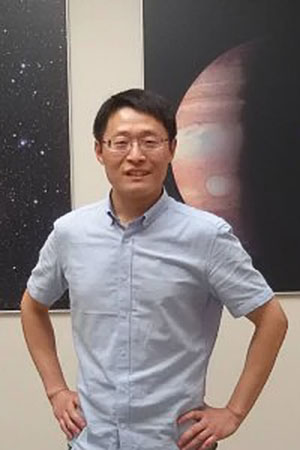USTC Astronomy Seminar Series: Fall
Planetary Nebulae as Probes of the Stellar and Galaxy Evolution
方玄 博士后
香港大学
2018/12/28, 4:00pm , the 19th-floor Observatory Hall

Planetary nebulae (PNe) are descendants of the low- and intermediate-mass stars, which account for the absolute majority of stellar populations in the universe. As an important category of the interstellar medium, PNe are one of the few classes of celestial objects that are active in every part of the electromagnetic spectrum; they have proven to be ideal laboratories to study various astrophysical processes and excellent tracers of the chemistry, dynamics, and stellar populations of their host galaxy. Today the more in-depth investigation of PNe requires cutting-edge instrumentation (e.g., IFU, AO). I will give a talk based on my recent work on PNe using the world- class telescopes, including the Hubble Space Telescope (HST), the 10.4m Gran Telescopio Canarias (GTC), and the 3.6m Canada-France-Hawaii Telescope (CFHT).
方玄:香港大學太空研究實驗室和物理系的博士後研究員。2011年在北京大學获得天體物理博士學位。2013--2016年在IAA-CSIC從事博士後研究工作。至今已經在行星狀星雲及相關研究領域有超過十年的科研積累。自2013年始,方玄博士主持了多個使用國際上最先進望遠鏡開展的科研項目。這些先進望遠鏡,包括了10.4米加納利大型望遠鏡和哈勃太空望遠鏡。他在加納利大型望遠鏡上獲得並完成了140個小時的觀測時間,是使用該大型望遠鏡最多、最有經驗的中國籍科學家。
 邮编:230026 ,
邮编:230026 ,  联系电话: 0551-63601861
联系电话: 0551-63601861 Email:
Email: